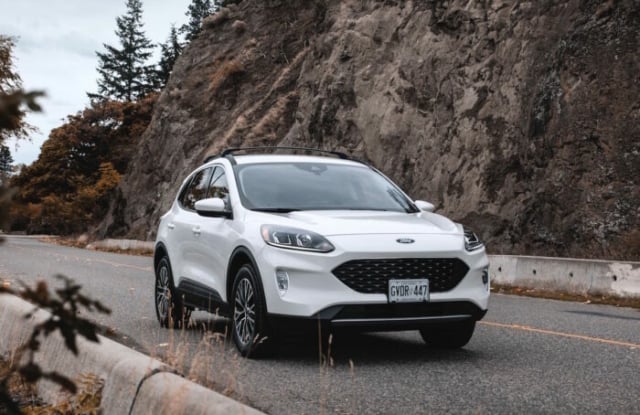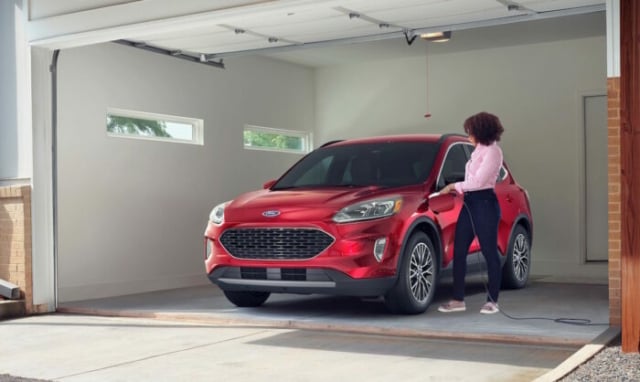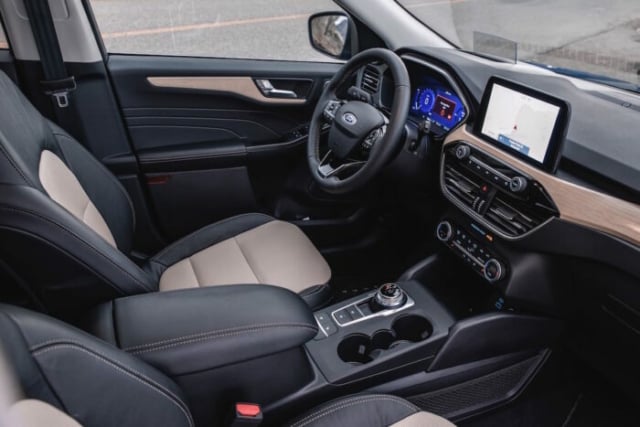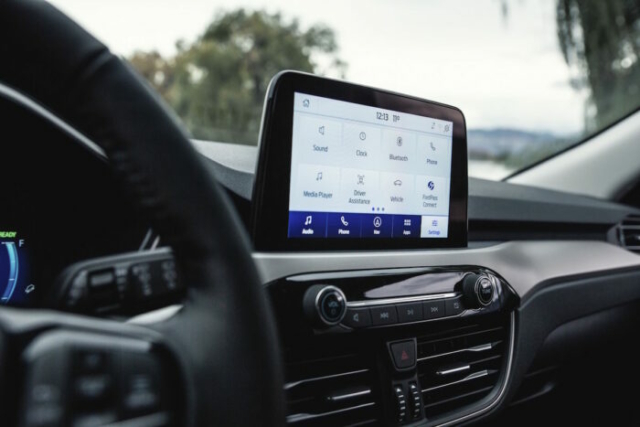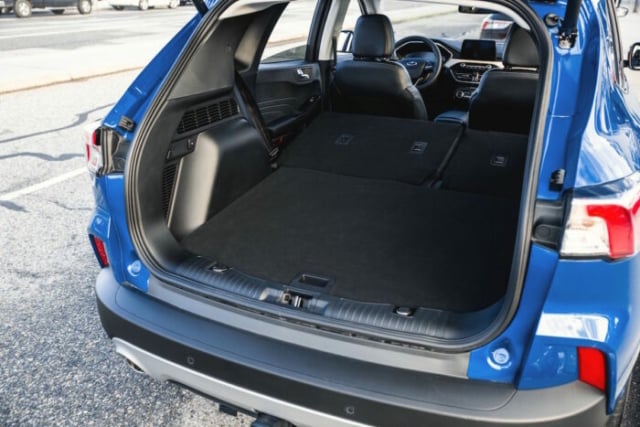Ford showed foresight in making an Escape Hybrid available from launch when the compact SUV was renewed in 2019. The arrival of a plug-in hybrid (PHEV) now ensures that it keeps pace with its Toyota RAV4 rival, which has been available in Prime PHEV form since late-2020.
“We’re known for selling a lot of trucks, but Escape is our second-best selling vehicle,” says Mathieu Rompré, Escape marketing manager for Ford Canada. He notes that more than 25% of all new vehicles sold in Canada in 2021 will be compact SUVs, so Escape matters.
The PHEV offers around 60km (37 miles) of electric-only range, which will be enough to meet the needs of many North American commuters. We travelled to British Columbia, Canada, for a first drive of the fuel-efficient newcomer.
Ford Escape PHEV pricing
The PHEV is available from the SE grade upwards. All grades share the same powertrain, which is FWD-only (based on cost and weight considerations, Ford says) and has a total system output of 220 HP.
MSRPs start at C$37,649 (US$ $33,075) for the SE, rising through C$40,649 (US$35,815) for the SEL to C$43,749 (US$38,885) for the Titanium. For all grades, the premium over a regular Hybrid is around C$6,000/US$5,000.

An SEL we drove in BC had three packages fitted: the Class II trailer tow package (C$600/US$495), Co-Pilot360 Assist+ (C$850/US$895) and the Technology package (C$2,500/US$1,050), pushing the total to C$45,149 exclusive of destination and delivery charges. Meanwhile a Titanium had the trailer tow package as well as the Titanium Elite package (C$2,300; US$2,500 for the identical Premium package Stateside), bringing the total price to C$47,299.
Exterior styling
You’ll be hard pressed to distinguish the plug-in Escape from other versions when you see one on the road. There’s discreet badging at the rear and unique 18in wheels that are common to all PHEV grades. Our SEL came in a very dark shade of Antimatter Blue and was fitted with roof rail crossbars (a C$200/US$145 option) while the Titanium was finished in appealing Star White metallic tri-coat paint (an extra C$550/US$595).
2021 Ford Escape PHEV Interior and equipment
Inside, the PHEV’s design is again very similar to differently propelled Escapes. All grades get SYNC 3 infotainment, Co-Pilot360 safety technologies and FordPass Connect app access to assist with charge programming. In Canada, even the SE grade comes with heated front seats.

Content can be boosted by specifying one of several packages. For the Titanium we drove, for example, the Elite/Premium package stepped up the luxury with a head-up display, panoramic roof and leather-trimmed seats in place of the standard ActiveX material. Regardless of trim material, we found the Escape PHEV’s front seats to be very comfortable on a long run.
Happily, the SUV’s generous rear-passenger space is also retained because the compact drive battery does not encroach. The rear seat still slides fore and aft so that owners can prioritize space for passengers or cargo. All interior and cargo dimensions are the same as the regular Escape Hybrid, which has 3.1L less cargo capacity than gas-only models.
Plug-in hybrid powertrain
Where the Escape PHEV differs most from its siblings is in the powertrain. The fourth generation of Ford’s ‘Powersplit’ architecture is more efficient than before, with higher power (220 HP) and torque. The system comprises a 2.5-litre Atkinson cycle combustion engine, a lighter electronic continuously variable transmission (eCVT) and a 14.4kWh lithium-ion drive battery under the rear seats. The pack can be charged in as little as 3.5 hours using a Level 2/240V outlet, or 10.5 hours with a household Level 1/110V setup.
When driving, a new EV Charge mode will charge the battery ready for use later, such as in an urban zero-emissions zone. Other modes are the default EV Auto, EV Now (for immediate EV driving) and EV Later (to preserve charge).
Performance
Ford claims 60km (37 miles) of electric range for the Escape PHEV with combined fuel consumption of 2.2Le/100km (US EPA 102mpge). Like a regular hybrid, the PHEV will manage the power sources once the battery has been drained to maximize the use of any electrical power harvested from regenerative braking. During our test drive we completed a 103km (64-mile) route with 79km (49 miles) spent on electric. Combined consumption was right on the claimed figure.

On a 264km (164-mile), higher-speed route without first charging the battery, we ran 85km (53 miles) on electric for an overall consumption of 5.7L/100km. That almost exactly matches the official gas-only consumption figure of 5.8L/100km (EPA 41mpg) and is a good indication of what you might achieve on long distances in the real world.
As in other PHEVs, the Escape’s instant torque is an appealing feature. During EV running we noticed the road noise from the General Altimax Arctic 12 winter tires, but wind noise was limited to a tiny amount of buffeting around the door mirrors. Overall, it’s quiet and the transitions between gas and electric are mostly imperceptible.
Unfortunately, the lane-keeping assist comes at the expense of Ford’s usually excellent steering feel. Smooth test roads made it impossible to judge the impact of the PHEV system’s additional 150kg/330 lb on ride comfort, but the SUV settled well on the highway.
Takeaway
PHEVs like the Escape are a great choice at a time when the charging infrastructure for pure-EVs is far from mature in many parts of North America. Ford Canada expects the well-executed PHEV to take 10-12% of Escape sales, with a further 25% for the Hybrid and the rest gas-powered. Some buyers will look elsewhere for AWD, but our guess is that in a booming compact-SUV market short on plug-in alternatives, Ford will sell as many Escape PHEVs as it can build.
Pros
- Independence from EV charging infrastructure
- Uncompromised passenger and cargo space
- Well-executed PHEV powertrain
Cons
- No AWD option
- Safety tech compromises steering feel
- Choose your winter tires carefully



